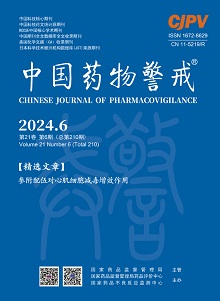|
|
Therapeutic effect and immune mechanism of artemisia annua L. ointment on mouse eczema models
XIE Zhiqiang, YUAN Jiqiao, LI Jialin, LIU Zhengyue, WANG Manyuan
2024, 21(6):
617-624.
DOI: 10.19803/j.1672-8629.20240033
Objective To evaluate the therapeutic effect of Artemisia annua L. ointment against eczema and explore its potential immunomodulatory mechanism. Methods Seventy KM mice were randomly divided into seven groups: normal control group, model group, positive drug group, artemisia annua L. ointment low (0.4 g·g-1), medium (0.8 g·g-1), and high (1.6 g·g-1) dose groups, and drug control group. Except for the normal control group and the drug control group, all the mice were induced with eczema by applying 2,4-dinitrochlorobenzene on the abdominal and ear skin. During treatment, the mice in each treatment group were topically administered with the corresponding drugs once a day for 12 days. The degree of ear swelling and thickness change were measured, and the ear allergic reactions were scored. The ear skin tissue was collected for HE staining and histopathological examination. The organ index of each group of mice was calculated while the levels of inflammatory cytokines such as interferon-γ (IFN-γ) , interleukin-2 (IL-2), tumor necrosis factor-α (TNF-α), interleukin-6 (IL-6) and interleukin-4 (IL-4) in serum were quantified using the ELISA method. Results On the 15th day, the difference in ear thickness in the model group was significantly increased compared with the normal control group (P<0.001), and the ear anaphylaxis score was significantly increased (P<0.001). Compared with the model group, the ear thickness of mice in low and medium dose groups of artemisia annua L. ointment decreased significantly (P<0.05), and the ear anaphylaxis score decreased in a dose-dependent manner, but the difference was insignificant. On the 19th day, compared with the normal control group, the ear thickness difference in the model group was significantly increased (P<0.001), the ear anaphylaxis score was significantly increased (P<0.001), and the serum levels of IFN-γ、IL-2 and TNF-α were significantly decreased (P<0.001), but the levels of IL-6 and IL-4 were significantly increased (P<0.001). Compared with the model group, there was no significant difference in ear thickness between the low and medium dose groups, and the ear allergy response score decreased in a dose-dependent manner, but the difference was not significant. Serum IFN-γ levels (P<0.001) and TNF-α levels (P<0.05) were significantly increased in the low dose group, and IL-2 levels were increased but the difference was not significant. The levels of IL-6 (P<0.01) and IL-4 (P<0.05) were significantly decreased, but serum levels of IFN-γ (P<0.001), IL-2 (P<0.05) and TNF-α (P<0.05) were significantly increased in artemisia annua L. ointment medium dose group, while IL-6 (P<0.001) and IL-4 levels (P<0.001) were significantly decreased. At the end of the experiment, the ear swelling of the model group was significantly increased compared with the normal control group (P<0.001), the ear skin tissue showed obvious inflammatory cell infiltration, and the spleen index was significantly increased (P<0.01). Compared with the model group, ear swelling of mice in low and medium dose groups was significantly improved (P<0.001), inflammatory cell infiltration in ear skin tissue of mice in the low dose group was reduced, and the spleen index was significantly decreased (P<0.05). Conclusion artemisia annua L. ointment has a significant therapeutic effect against eczema, and its mechanism may be related to the regulation of the balance of Th1/Th2 cell functions and the inhibition of allergic inflammatory reactions.
References |
Related Articles |
Metrics
|
